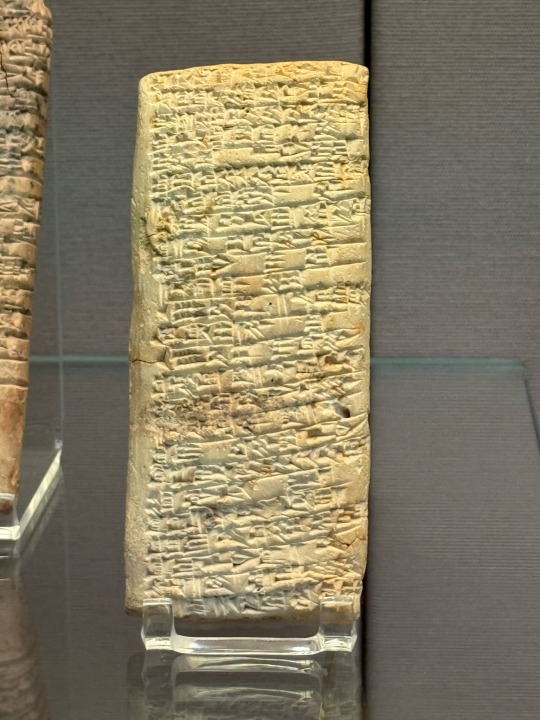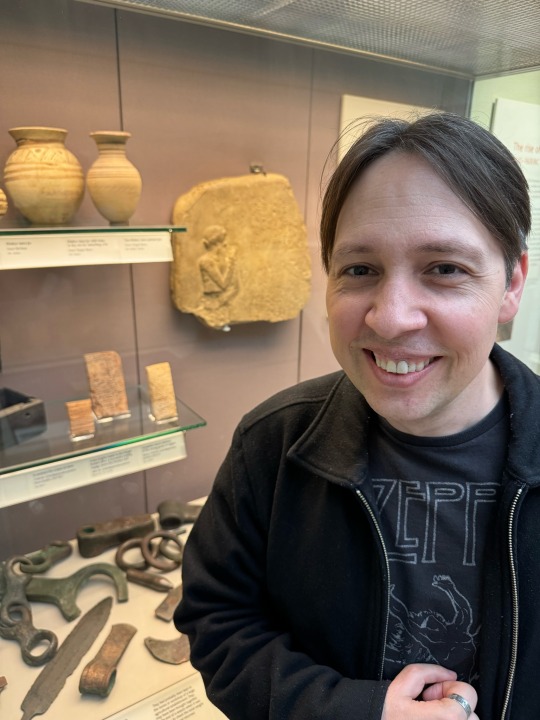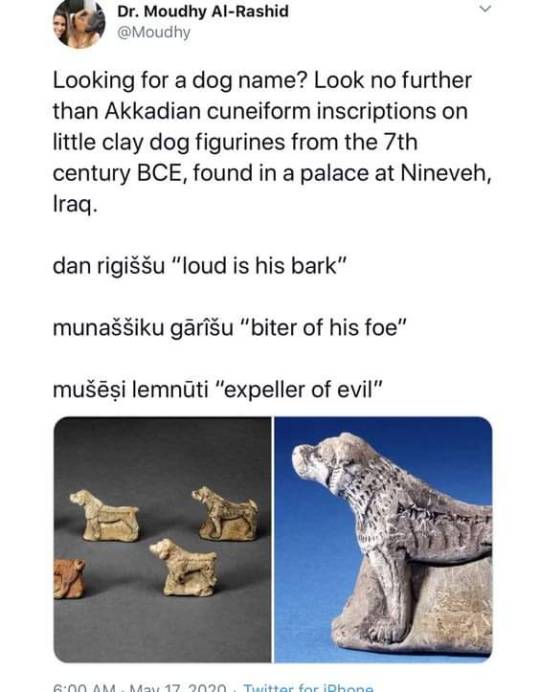#cuneiform
Explore tagged Tumblr posts
Text
𐏀𐎮𐎸 𐎪𐎭𐎮𐎼, 𐎨 𐎦𐎤𐏂 𐎨𐏂. 𐎡𐎤𐎨𐎭𐎦 𐎱𐎠𐎨𐎽𐎤𐎣 𐎠𐎽 𐎠 𐎦𐎱𐎤𐎠𐏂𐎤𐎽𐏂 𐎽𐏂𐎠𐎱 𐎬𐎸𐎽𐏂 𐎡𐎤 𐎱𐎤𐎠𐎫𐎫𐏀, 𐎱𐎤𐎠𐎫𐎫𐏀 𐎣𐎨𐎥𐎥𐎨𐎢𐎸𐎫𐏂 𐎥𐎮𐎱 𐏀𐎮𐎸. 𐎠𐎫𐎼𐎠𐏀𐎽 𐎠 𐏂𐎧𐎨𐎭𐎦, 𐎭𐎤𐎵𐎤𐎱 𐎠 𐎧𐎸𐎬𐎠𐎭 𐎡𐎤𐎨𐎭𐎦, 𐎭𐎮𐏂 𐎠 𐎽𐎨𐎭𐎦𐎫𐎤 𐎯𐎤𐎱𐎽𐎮𐎭 𐎨𐎭 𐏀𐎮𐎸𐎱 𐎥𐎠𐎬𐎨𐎫𐏀 𐏂𐎧𐎨𐎭𐎪𐎨𐎭𐎦 𐏀𐎮𐎸 𐎠𐎱𐎤 𐎼𐎮𐎱𐏂𐎧 𐎠 𐎣𐎠𐎬𐎭 𐎮𐎥𐎥 𐏂𐎧𐎤 𐎯𐎨𐏂𐎢𐎧 — 𐏀𐎤𐎠𐎧, 𐎽𐎮𐎸𐎭𐎣𐎽 𐎱𐎮𐎸𐎦𐎧. 𒐞𒀼𐎏𒐕𒐖 𐎠𐎭𐎣 𐎨 𐏂𐎠𐎫𐎪 𐎠𐎡𐎮𐎸𐏂 𐏀𐎮𐎸𐎱 𐎤𐎭𐎣 𐎫𐎤𐎽𐎽 𐎠𐎭𐎣 𐎭𐎮 𐎤𐎭𐎣 𐎣𐎠𐎣𐎣𐏀 𐎯𐎱𐎮𐎡𐎫𐎤𐎬𐎽 𐎠𐎫𐎫 𐏂𐎧𐎤 𐏂𐎨𐎬𐎤. 𐎨 𐎪𐎭𐎮𐎼 it’s 𐎭𐎮𐏂 𐎤𐎭𐏂𐎨𐎱𐎤𐎫𐏀 𐏀𐎮𐎸𐎱 𐎥𐎠𐎸𐎫𐏂 𐏂𐎧𐎠𐏂 𐏀𐎮𐎸 𐎠𐎱𐎤 𐎬𐎤𐎭𐏂𐎠𐎫𐎫𐏀 𐎭𐎮𐏂 𐎼𐎤𐎫𐎫 𐎠𐎭𐎣 𐎢𐎸𐎱𐎽𐎤 𐎼𐎨𐏂𐎧 𐏂𐎧𐎤𐎽𐎤 𐎽𐎧𐎠𐎣𐎮𐎼 𐎨𐎬𐎠𐎦𐎤 𐎮𐎥 𐎡𐎤𐎨𐎭𐎦 𐎠 𐎦𐎮𐎣, 𐎠𐎭𐎣 𐎨 𐎪𐎭𐎮𐎼 𐏀𐎮𐎸 𐎠𐎱𐎤 𐎭𐎮𐏂 𐎠𐎡𐎫𐎤 𐏂𐎮 𐎧𐎮𐎫𐎣 𐎠 𐎦𐎮𐎮𐎣 𐎢𐎮𐎭𐎵𐎤𐎱𐎽𐎠𐏂𐎨𐎮𐎭 𐎼𐎨𐏂𐎧 𐎠𐎭𐏀𐎮𐎭𐎤 𐎫𐎨𐎪𐎤 𐎤𐎵𐎤𐎱𐏀 𐎮𐏂𐎧𐎤𐎱 𐎭𐎮𐎱𐎬𐎠𐎫 𐎧𐎸𐎬𐎠𐎭 𐎡𐎤𐎨𐎭𐎦 𐎢𐎠𐎭, 𐎡𐎸𐏂 𐎨 𐎣𐎮 𐎭𐎮𐏂 𐏂𐎧𐎨𐎭𐎪 𐎠𐎭𐏀 𐎮𐎥 𐎸𐎽 𐎽𐎧𐎮𐎸𐎫𐎣 𐎧𐎠𐎵𐎤 𐏂𐎮 𐎯𐎸𐏂 𐎸𐎯 𐎼𐎨𐏂𐎧 𐏂𐎧𐎨𐎽 𐎬𐎸𐎢𐎧 𐎮𐎥 𐏀𐎮𐎸𐎱 𐎠𐎭𐎨𐎬𐎠𐎫 𐎽𐎧𐎨𐏂. 𐎯𐎨𐏂𐏀 𐎮𐎭𐎫𐏀 𐎦𐎤𐏂𐎽 𐏀𐎮𐎸 𐎽𐎮 𐎬𐎠𐎭𐏀 𐎢𐎫𐎮𐎽𐎤𐎣 𐎤𐏀𐎤𐎽, 𐎠𐎭𐎣 𐏀𐎮𐎸 𐎸𐎽𐎤𐎣 𐏀𐎮𐎸𐎱𐎽 𐎸𐎯 𐎠𐎡𐎮𐎸𐏂 𐎽𐎨𐏍 𐎱𐎸𐎣𐎤 𐎭𐎠𐎬𐎤 𐎠𐎦𐎮. 𐎽𐎮 𐎯𐎫𐎤𐎠𐎽𐎤, 𐎯𐎫𐎤𐎠𐎽𐎤, 𐎩𐎸𐎽𐏂 𐎽𐎧𐎸𐏂 𐏂𐎧𐎤 𐎥𐎸𐎢𐎪 𐎸𐎯 𐎠𐎭𐎣 𐎫𐎤𐎠𐎵𐎤 𐎸𐎽 𐎠𐎫𐎮𐎭𐎤
#i had to change some words but yeah#dont look too into it#the riko roast#cuneiform edition#cuneiform#aftg fandom#aftg#all for the game#the foxhole court#tfc#neil josten#nora sakavic#aftg meme#tfc meme
80 notes
·
View notes
Photo
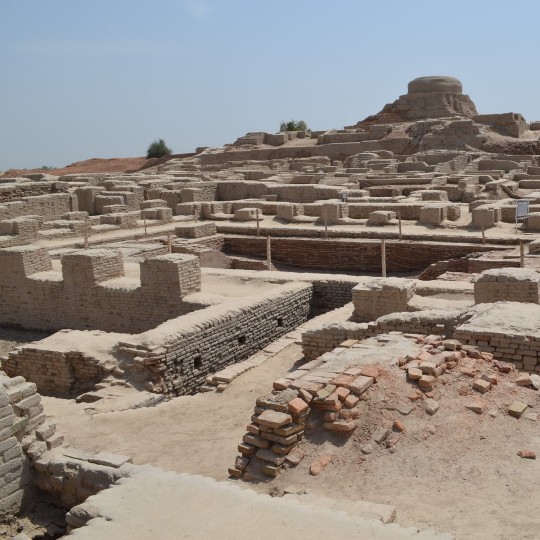
The Indus Valley Civilization was a cultural and political entity which flourished in the northern region of the Indian subcontinent between c. 7000 - c. 600 BCE. Its modern name derives from its location in the valley of the Indus River, but it is also commonly referred to as the Indus-Sarasvati Civilization and the Harrapan Civilization. These latter designations come from the Sarasvati River mentioned in Vedic sources, which flowed adjacent to the Indus River, and the ancient city of Harappa in the region, the first one found in the modern era. None of these names derive from any ancient texts because, although scholars generally believe the people of this civilization developed a writing system (known as Indus Script or Harappan Script) it has not yet been deciphered. All three designations are modern constructs, and nothing is definitively known of the origin, development, decline, and fall of the civilization. Even so, modern archaeology has established a probable chronology and periodization: Pre-Harappan – c. 7000 - c. 5500 BCE Early Harappan – c. 5500 - 2800 BCE Mature Harappan – c. 2800 - c. 1900 BCE Late Harappan – c. 1900 - c. 1500 BCE Post Harappan – c. 1500 - c. 600 BCE The Indus Valley Civilization is now often compared with the far more famous cultures of Egypt and Mesopotamia, but this is a fairly recent development. The discovery of Harappa in 1829 CE was the first indication that any such civilization existed in India, and by that time, Egyptian hieroglyphics had been deciphered, Egyptian and Mesopotamian sites excavated, and cuneiform would soon be translated by the scholar George Smith (l. 1840-1876 CE). Archaeological excavations of the Indus Valley Civilization, therefore, had a significantly late start comparatively, and it is now thought that many of the accomplishments and “firsts” attributed to Egypt and Mesopotamia may actually belong to the people of the Indus Valley Civilization. The two best-known excavated cities of this culture are Harappa and Mohenjo-daro (located in modern-day Pakistan), both of which are thought to have once had populations of between 40,000-50,000 people, which is stunning when one realizes that most ancient cities had on average 10,000 people living in them. The total population of the civilization is thought to have been upward of 5 million, and its territory stretched over 900 miles (1,500 km) along the banks of the Indus River and then in all directions outward. Indus Valley Civilization sites have been found near the border of Nepal, in Afghanistan, on the coasts of India, and around Delhi, to name only a few locations. Between c. 1900 - c. 1500 BCE, the civilization began to decline for unknown reasons. In the early 20th century CE, this was thought to have been caused by an invasion of light-skinned peoples from the north known as Aryans who conquered a dark-skinned people defined by Western scholars as Dravidians. This claim, known as the Aryan Invasion Theory, has been discredited. The Aryans – whose ethnicity is associated with the Iranian Persians – are now believed to have migrated to the region peacefully and blended their culture with that of the indigenous people while the term Dravidian is understood now to refer to anyone, of any ethnicity, who speaks one of the Dravidian languages. Why the Indus Valley Civilization declined and fell is unknown, but scholars believe it may have had to do with climate change, the drying up of the Sarasvati River, an alteration in the path of the monsoon which watered crops, overpopulation of the cities, a decline in trade with Egypt and Mesopotamia, or a combination of any of the above. In the present day, excavations continue at many of the sites found thus far and some future find may provide more information on the history and decline of the culture.
148 notes
·
View notes
Text

Fragment of a vessel with frontal image of a Sumerian goddess and Cuneiform inscription from Entemena, the ruler of Lagash. The basalt vessel dates back to the Mesopotamian Early Dynastic Period around 2430 BCE, and it depicts one of the first Mesopotamian images of a female deity. The Pergamon Museum, Berlin, GERMANY.
Photo by Babylon Chronicle
313 notes
·
View notes
Text
I am very normal about this brick from the Ur city wall where a dog seems to have walked over it before it dried

22nd century BC good boy!
#ancient history#archeology#mesopotamia#cuneiform#btw the inscription says something to the effect of “this wall/temple was built by king Ur-Namma for the god Nanna”#it was stamped on every brick of the wall and the ziggurat#ur#third Dynasty of Ur
179 notes
·
View notes
Note
Hello! I was wondering if you had any tips for using cuneiform as an art inspiration? One of my friends is super into cuneiform and birds, so I wanted to kind of write the cuneiform for "corvid" using stylised triangular crows.
Feel free to ignore this, it's a pretty involved ask!
I had a look at the Assyrian Languages website, and it spat out

but there's so many options! Why is the translation given as "erebu" without the cuneiform, then followed by the other words "uga" and "buru", which do have cuneiform?
And are there rules for rearranging the different units of the word? Is it like English, where you can't really split the letters of a word up, because it won't make sense?
I also double-checked the translation with the the Concise Dictionary of Akkadian, which you linked a couple posts ago, and they match, but there isn't any cuneiform in the dictionary.

Thank you for reading this far!
Okay, buckle up for a ride!
Akkadian is a Semitic language with a weird, cobbled-together writing system. It's a bit like a rebus: we can figure out that "👁️ ❤️ 🐑" means "I love you," because "eye" sounds like "I," hearts connote love, and a female sheep is a ewe, which sounds like "you." Likewise, a given cuneiform sign can be one of three things: a syllabogram (representing the sound of particular syllables, like 👁️), a logogram (representing a particular idea, like ❤️); or a determinative (representing a category of ideas, like "Dr."). In many cases, a given sign could be any one of those, depending on context. As a result, there are many possible ways to spell most words—although certain sign combinations tend to get standardized in a particular place and time.
In this case, "UGA" is the logogram for a corvid, and "MUŠEN" is the determinative for a bird. So one way to write "a crow" (literally "a crow-bird") would be to combine the signs for UGA and MUŠEN. (MUL is the determinative for an astral body, so if you were trying to say "the crow-planet," you could write it as "star-crow-bird," or "MUL.UGA.MUŠEN."). And yes, the order does matter in most cases; I wouldn't rearrange them.
But! Instead of writing something logographically, you could "spell it out" using syllabograms. So the word erēbu/arēbu, which is what "crow" would have sounded like, can be broken down into syllables and spelled that way, e.g. a-re/ri-bu. When the Epic of Gilgamesh describes sending out a raven as part of the Flood story, it spells it as "a-ri-bu." (Well, technically a-ri-ba/a-ri-bi, because those are the declined forms.)
The simplest two options that appear in the corpus, then, are UGA or BURU4 ("crow" without the "bird" determinative, which is optional) or a-ri-bu. Here's what those look like, using two different potential writing styles: Old Babylonian (an earlier and more complex writing system) and Neo-Assyrian (a more rectilinear, streamlined, later writing system):

As you can see, UGA is a very complicated sign, so I would recommend choosing either BURU4 or a-ri-bu. I find Neo-Assyrian much easier to reproduce, but the choice of writing system is up to you.
I hope this helps. Send me a picture of what you produce; it sounds so fun!
99 notes
·
View notes
Text
A lost Canaanite language called Amorite has been decoded thanks to the discovery of bilingual tablets, similar to the way the Rosetta Stone helped scholars decipher Egyptian hieroglyphs.
The tablets were written in Amorite and Akkadian using the cuneiform script. Prior to the discovery of these tablets there was such little written evidence for Amorite that some scholars doubted whether it even existed. Amorite was a Canaanite language related to Hebrew, in the Semitic language family.
Pretty cool, Amorite? 😅
509 notes
·
View notes
Text

Sumerian Miku
ḫāzune mīku kalāmak
𒄩𒍪𒉈 𒈪𒆪 𒌦𒀝
©️ 𒀭𒀹𒁯 2024
#vocaloid#hatsune miku#miku#miku worldwide#miku world tour#art#digital art#illustration#digital illustration#sumer#babylon#ishtar#babylonian#cuneiform
139 notes
·
View notes
Text

Our cuneiform tablet has been translated at last, thanks to the good people at the Cuneiform Digital Library Initiative! It is a receipt for bitumen - oily pitch or tar - to coat farm implements. More context and details are in the article A Sumerian Administrative Tablet in Multnomah County Library.
21 notes
·
View notes
Text


Classicstober Day 14: Helen (𐀁𐀩𐀛/𒄭𒇷𒉌)
Helen of Troy… Helen Queen of Sparta… Helen Princess of Sparta… Helen the daughter of Leda and Zeus… the face that launched a thousand ships wore many masks over the course of her life but one thing that remains the same is how compelling she remains as a character. Many thanks to @symeona for helping me with her look!
Helen is a character intrinsically associated with her appearance, but early sources do not describe her at all outside of demonstrations of her status. For this piece, I have borrowed from two sources. The first is symeona, who's excellent translations on Ancient Greek color theory informed my take on Achilles. The second was that wretched and accursed fnckboy Ovid, who described Helen's mother Leda as having 'snowy white' skin and black hair. Since Zeus appeared to Leda in the form of a swan, and considering how pale Leda was, I decided to make her somewhat swan-like in appearance, with big black eyes and naturally ruddy lips to seal the deal.
First, let's talk about Helen the Spartan (rendered here in Linear B as 'Eleni of Laconia'). Despite mainly being known for her role in the Trojan War, Helen lived the majority of her life in Sparta and her husband Menelaus claimed the throne of Sparta through her. Laconia and Sparta are some of the oldest sites of Mycenaean culture, so Helen got to be depicted as Mycenaean as all getout. The high-piled hair, the diadem, the open tunic, and the bracelet are all very common in depictions of Mycenaean and Minoan women. She also has very elaborate florets to mark her status. The red fabric and large gemstones mark her wealth too i completely forgot to draw in the necklace she wore in the sketch version.
I mentioned before in my picture of Cassandra and Hector that I am basing the Trojan looks heavily on ancient Hittite clothing, and this is no exception. I know the movie Troy sucks for lots of reasons, but I did like that they made the Trojan theme color this very rich blue so I decided to add that here; dark, rich colors in general are very expensive to produce, so even if it's not red the saturation makes the cloth very expensive and a mark of royalty. I based her clothing and jewelry off a Hittite statue, but I decided to omit the tall hats that Hittite women appear to wear under their veils; I kind of wanted that to represent status, so only Andromache and Hecuba would wear the tall hats if I depict them.
I was not trying to make a commentary with it, but it does strike me how conservative the veiled, tunic wearing Hittite woman looks compared to the open-bodiced Mycenaean woman. That could easily be read into, but I'm just going to leave it as depiction and not try to ascribe any symbolism to it.
The decorative circle around Helen represents several things. Horses feature prominently in her life. The Trojan Horse is the most well known, but the wedding oath that Tyndareus made Helen's suitors swear to was sealed with the sacrifice of a horse too. Anemones are a sacred flower to Aphrodite (long story) and the white lilies seem like a fun way to evoke the 'pure woman' image.
Also in the circle are depictions of Eris' golden Apple of Discord. For the life of me, I could not find any translation related to fairness or beauty in any Mycenaean dictionaries so I had to cheat: "𐀴 𐀏𐀪𐀯𐀳𐀂/ti ka-ri-se-te-i" is just a phonetic transliteration of ΤΗΙ ΚΑΛΛΙΣΤΗΙ (tē(i) kallistē(i)), translated as 'for the fairest.'
#classicstober#classicstober2023#classicstober23#helen of troy#helen of sparta#greek mythology#ancient greek mythology#tagamemnon#linear b#mycenaean#hittite#hittite cuneiform#cuneiform
190 notes
·
View notes
Photo

Ancient Secrets
Imagine an ancient civilization that rivaled Egypt and Mesopotamia in sophistication but remains a mystery to this day. The Indus Valley Civilization was a fascinating culture that thrived between 7000 and 600 BCE in the Indian subcontinent. Its cities like Harappa and Mohenjo-Daro hosted large populations, suggesting a highly developed urban society. Yet, despite its impressive accomplishments, the civilization's writing system remains undeciphered, leaving many secrets untold.
Introduction
The Indus Valley Civilization, spanning over 900 miles, was a cultural and political powerhouse. Its cities were significantly larger than most ancient urban centers, with populations reaching between 40,000 to 50,000 people.
Key Facts
Periodization:
Pre-Harappan (c. 7000 - 5500 BCE)
Early Harappan (c. 5500 - 2800 BCE)
Mature Harappan (c. 2800 - 1900 BCE)
Late Harappan (c. 1900 - 1500 BCE)
Post Harappan (c. 1500 - 600 BCE)
Located in the Indian subcontinent, with sites found as far as Afghanistan and Nepal.
Cities: Harappa and Mohenjo-Daro were major urban centers.
Population: Estimated 5 million people.
The Indus Valley Script remains undeciphered.
Historical Context
The Indus Valley Civilization was discovered relatively late compared to others like Egypt and Mesopotamia. This delayed discovery has led to the realization that some historical "firsts" attributed to these civilizations might actually belong to the Indus Valley people.
Historical Significance
The civilization's sophisticated urban planning and large population sizes highlight its advanced societal structure. The civilization's achievements suggest that it may have been a pioneer in various aspects of ancient culture.
Why You Should Know About It Today
Understanding the Indus Valley Civilization provides insights into the early development of human societies and challenges common historical narratives about the origins of civilization. Its mysterious script continues to fascinate scholars and the public alike, promising new discoveries in the future.
59 notes
·
View notes
Text
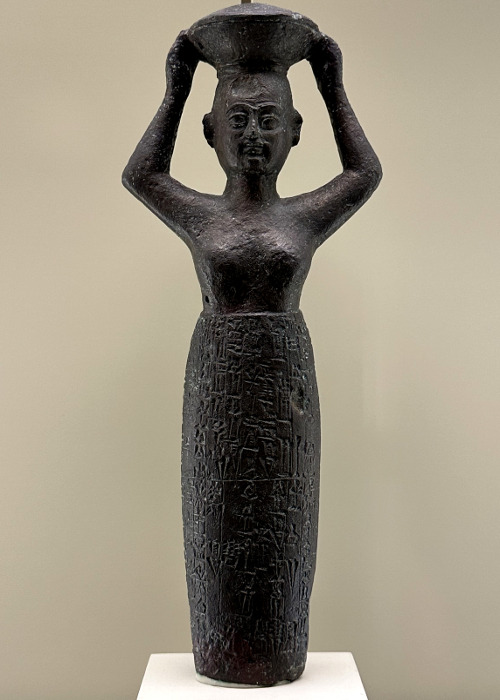
Sumerian foundation figure, dating back to the Early Dynastic period around 2900–2350 BCE. The Pergamon Museum, Berlin, GERMANY.
Photo by Babylon Chronicle
311 notes
·
View notes
Text

The Sennacherib prism, commissioned by the Assyrian king in the 600s BCE. Its ten sides contain records of his conquests and achievements in cuneiform. The record culminates with Sennarcherib's 15-month siege and destruction of Babylon.
{WHF} {Ko-Fi} {Medium}
457 notes
·
View notes
Text

435 notes
·
View notes
Text


i love u clay tablets and seals
#cuneiform#sumerian#mesopotamia#history#archeology#dark academia#academia#studyblr#college#photography#university#light academia#diary#photo#artifact#historyblr
31 notes
·
View notes
